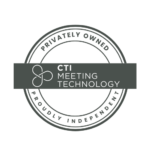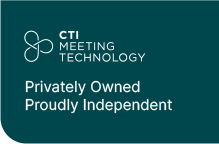If there’s one common thread connecting physicians, researchers, and medical students, it’s the likelihood of attending at least one medical meeting during their careers. For many healthcare professionals, these conferences are places where groundbreaking research is unveiled, best practices are shared, and networking with peers is possible.
At its core, a medical meeting is a structured gathering of professionals from various healthcare and life science disciplines. These include physicians, researchers, nurses, pharmacists, industry representatives, policymakers, and students. The primary purpose of such a meeting is the spread of knowledge, the presentation of new research findings, the discussion of clinical challenges, the fostering of collaboration, and the continuous professional development of attendees. This means that medical meetings are often characterized by scientific rigor and adherence to ethical guidelines.
As an event organizer or PCO, understanding the specific challenges of medical meetings is crucial for mastering the management of these complex gatherings. We will delve into the ‘what’ and ‘why’ of these essential gatherings, explore the intricate planning process, and highlight how cutting-edge software solutions can help you manage these events more efficiently.
Why Are They Important
Medical and scientific meetings go beyond information sharing. There are multiple reasons why an organization decides to organize a conference and why individuals attend:
- Knowledge Dissemination and Education: The medical industry moves fast, and it’s essential to find a place where all the latest findings and new techniques are shared. This ensures healthcare professionals remain updated with current knowledge, directly impacting patient outcomes.
- Continuing Medical Education (CME): Many medical meetings offer accredited educational sessions, allowing attendees to earn CME credits. These certificates are essential for medical professionals to stay competent and up-to-date.
- Networking and Collaboration: These gatherings provide unparalleled opportunities for professionals to connect with peers, establish collaborations, and build relationships leading to multi-center studies, interdisciplinary projects, and career advancements. This is especially interesting for students or recent graduates looking for mentors.
- Benchmarking and Best Practices: Attendees can learn about new clinical guidelines, surgical techniques, diagnostic tools, and treatment protocols, enabling them to benchmark their practices against established standards and adopt best practices.
- Industry Engagement: Medical meetings often feature exhibitions where pharmaceutical companies, medical device manufacturers, and technology providers showcase their latest innovations. It can foster dialogue between physicians, researchers, and industry, driving innovation and improving healthcare solutions.
- Policy and Advocacy: Some meetings address critical healthcare policy issues, providing a platform for advocacy and influencing the future direction of healthcare systems.
- Global Health Impact: By gathering global experts, medical meetings contribute to addressing worldwide health challenges – sharing insights on disease prevention, outbreak management, and health disparities.
Before embarking on the complex journey of organizing a medical meeting, ask yourself the purpose of this gathering. That will guide every decision, from content development to marketing strategies. Clearly defining the ‘whys’ of your meeting will ensure that all planning efforts are aligned with the ultimate purpose of the event.
Types of Medical Meetings
Medical conferences come in various sizes and formats, each designed to achieve specific objectives or cater to different audiences. Selecting the best format is one of the most important steps at the beginning of the planning stage to ensure that you are taking the right approach for your meeting. The most common formats are:
- Annual Congresses: These are typically large-scale, multi-day events organized by professional medical societies (e.g., ESMO, ESGAR, ACS). They cover a broad range of topics within a specialty, featuring plenaries, symposia, research presentations, and workshops.
- Symposia: Focused gatherings addressing a specific subject or a series of related topics. They often involve a series of presentations by experts followed by panel discussions. Symposia can be standalone events or part of a broader congress.
- Workshops: Highly interactive sessions for hands-on learning or intensive discussion on a particular skill or technique. They are often smaller, more intimate settings focusing on practical application, usually part of a broader congress.
- Seminars: Educational events usually led by one or more experts, focusing on a particular subject. They tend to be more lecture-based than workshops but may include Q&A sessions.
- Grand Rounds: A traditional medical education activity where a case or topic is presented and discussed by experts, often within a hospital or academic institution.
- Webinars/Virtual Conferences: Virtual and hybrid formats have become increasingly popular, offering accessibility and flexibility. These replicate many aspects of in-person meetings online, with the added benefit of eliminating travel and being a more economical solution for individuals with reduced budgets.
Choosing the best format depends heavily on the objectives, target audience size, budget, and the nature of the content to be delivered. There is no right or wrong here! A smaller, more focused workshop might be ideal for skill-building, while a massive annual congress is necessary for disseminating broad research findings and fostering wide-ranging networking.
The Journey to a Successful Medical Meeting
Organizing a successful medical meeting is a multi-stage journey, with each phase critical to the overall success.
Conceptualization and Foundation
This initial phase sets the strategic direction for the entire event.
- Define Objectives and Scope: Building upon the ‘why,’ clearly articulate what the meeting aims to achieve. Is it to launch a new guideline? Present groundbreaking research? Facilitate a specific type of collaboration? The objectives will influence all subsequent decisions. Define the scope: regional, national, international? Target audience size?
- Establish Core Team and Roles: Assemble a dedicated team with clearly defined roles and responsibilities. This typically includes a project manager, scientific committee liaison, logistics coordinator, marketing specialist, and finance manager. PCOs assign internal teams and work closely with client stakeholders.
- Budgeting and Financial Planning: Develop a comprehensive budget accounting for all potential expenses (venue, AV, speakers, catering, marketing, staff, software solutions, contingency plan, etc.) and anticipated revenue streams (registration fees, sponsorship, exhibition sales). Proactive financial management, including regular tracking and adjustments, is crucial.
- Timeline Development: Create a detailed timeline with key milestones and deadlines for each phase of the planning process. This dynamic document helps keep the project on track and ensures critical tasks are completed on time. A typical timeline for a large medical conference can span 12-24 months.
Content and Program Development
The conference program is the heart of any medical meeting. Its quality and content directly impact attendee engagement and the perceived value of the meeting.
- Program Committee Formation: Assemble a distinguished program or scientific committee formed by leading experts in the relevant medical field. The program committee ensures scientific integrity, relevance, and quality.
- Topic Selection and Call for Abstracts: The program committee identifies key topics and themes based on the meeting objectives. A well-structured “Call for Abstracts” process is then initiated, inviting researchers and clinicians to submit their original work. Software solutions are invaluable to this process for managing submissions, reviews, and selections efficiently.
- Speaker Recruitment and Management: Identify and invite prominent speakers, opinion leaders, and experts to present their research and insights. This involves managing invitations and travel arrangements and ensuring they have all the necessary presentation materials. Clear communication and a professional approach are key.
- Agenda Creation: Structure the meeting agenda, balancing different session formats (plenaries, symposia, oral presentations, poster sessions, workshops). Consider flow, breaks, and networking opportunities to keep attendees engaged.
- Accreditation and CME/CPD: Obtaining accreditation for Continuing Medical Education (CME) or Continuing Professional Development (CPD) credits is essential for many medical meetings. This involves adhering to strict guidelines set by regulatory bodies (e.g., ACCME in the US, EACCME in Europe). This process is rigorous and requires meticulous documentation of educational content, faculty disclosures, and learning outcomes, but one of the main reasons for individuals to attend your conference.
Logistics and Operations
The success of a meeting also relies on how accommodating it is for the audience and the efficient use of meeting software and audiovisual technology.
- Venue Selection and Management: Choose a venue that aligns with the meeting size, format, budget, and technological requirements. Consider accessibility, capacity, available meeting rooms, and amenities. Establish a close collaboration with the venue staff.
- Technology and Audiovisual (AV): Invest in robust technology and AV services to support presentations, live streaming (for hybrid/virtual events), interactive sessions, and digital signage. This includes reliable internet connectivity, sound systems, projectors, and technical support. Many software solutions integrate directly with AV setups to streamline presentations.
- Registration Management: Implement a user-friendly and efficient registration software solution to manage attendee registrations, payments, and badge printing. The last thing you want is to lose attendees because registering for your event is too complex. This system should be able to handle different registration categories, early bird discounts, and group registrations.
- Accommodation and Travel: For onsite meetings, you can negotiate hotel blocks and provide travel information and assistance for attendees, especially for international events.
- Exhibition and Sponsorship Management: For larger scientific conferences, managing the exhibition floor and securing sponsorships is a significant undertaking. This involves developing sponsorship packages, recruiting exhibitors, managing booth assignments, and meeting sponsor deliverables. A dedicated event management software module for exhibition management can be a game-changer.
- Catering: Downtime is also a prominent component of your event! In fact, many of the conversations and networking between attendees will happen between sessions, like lunchtime. Plan menus that cater to diverse dietary needs and preferences. Ensure timely and high-quality food and beverage service throughout the event.
- Staffing and Volunteers: Recruit and train adequate staff and volunteers to assist with registration, wayfinding, session support, and general attendee inquiries. Clear roles and a comprehensive briefing are essential to ensure a smooth experience.
- Contingency Planning: Develop contingency plans for unforeseen circumstances such as speaker cancellations, technical glitches, medical emergencies, or natural disasters. “Plan B” is always necessary.
- Sustainability Practices: Try to incorporate sustainable practices into all aspects of the meeting, from reducing waste and energy consumption to promoting local sourcing and offering eco-friendly transportation options. This is becoming increasingly important for attendees and organizations alike.
Marketing and Promotion
Even the most meticulously planned medical meeting will fail if no one knows about it. Effective marketing is key to attracting the right audience.
- Branding and Messaging: Develop a compelling brand identity for the meeting, including a logo, color scheme, and consistent messaging highlighting its unique value proposition.
- Marketing Channels: Utilize a multi-channel marketing approach. Before you decide to have a presence in every single possible channel, conduct a quick research to identify where your audience is. In general, these are the places where you want to focus your resources:
- Website: A dedicated, informative, and user-friendly website is essential. It should be the go-to platform for all meeting information, registration, program details, and updates. Bonus points if you offer a mobile app that attendees can access during the meeting from their smartphones.
- Email Marketing: Conduct segmented email campaigns to target specific professional groups with relevant information about your meeting.
- Social Media: Engage with your target audience on platforms like LinkedIn, X, or professional medical forums.
- Professional Society Partnerships: Leverage the communication channels of relevant medical societies and associations to include details about your medical meeting.
- Press Releases and Media Relations: Issue press releases to medical journals and relevant media outlets.
- Paid Advertising: If you have the budget, consider conducting targeted online advertisements to reach specific demographics.
- Key Selling Points: Medical professionals get numerous invitations to conferences, but realistically, they would only attend a few due to money and time constraints. No matter the channel you choose, one thing you need to do every time is to clearly articulate the benefits of attending your medical conference:
- Groundbreaking research: Highlight key presentations and speakers.
- Networking opportunities: Emphasize the chance to connect with peers and leaders.
- CME/CPD credits: Promote the educational value for professional development.
- Exhibition highlights: Showcase innovative products and solutions.
- Unique location/experience: If applicable, leverage the appeal of the host city.
Onsite Execution and Post-Event
The event is the culmination of months of planning, requiring professional staff to efficiently manage onsite, which includes:
- Registration Desk: Efficiently manage attendee check-in, badge distribution, and any registration-related questions.
- Session Management: Ensure all sessions run on schedule, AV is functioning, and speakers are supported. In the days leading up to the meeting, conduct multiple tests and play different scenarios to ensure your team is well-prepared.
- Exhibition Floor: Oversee exhibitor needs, traffic flow, and networking opportunities.
- Troubleshooting: Be prepared to quickly address any issues, from technical glitches to catering mishaps. Consider having AV technicians onsite to tackle emerging problems.
- Attendee Support: Have visible staff to answer questions, provide directions, and offer assistance. Designate staff to answer questions online if your meeting has a virtual component.
- Emergency Protocols: Better be safe than sorry, so ensure all staff are aware of and trained on emergency procedures. Include visible signage and instructions for attendees on how to act in case of an emergency. Most venues already have safety plans to share with attendees and use to develop your own emergency protocol.
The work doesn’t stop when the last attendee leaves; post-event activities are crucial for maximizing the meeting’s impact and informing future events.
Post-Event Evaluation
- Attendee Feedback Surveys: Gather feedback on all aspects of the meeting (program content, speakers, venue, logistics) to identify areas for improvement.
- Finalize Budget: Finalize all financial accounts, pay outstanding invoices, and produce a comprehensive financial report to see if you stayed within budget or which areas would have benefited from a larger budget.
- Performance Metrics: Analyze key performance indicators (KPIs) such as attendance numbers, session attendance, engagement rates (for virtual/hybrid), and sponsorship ROI. This will help you understand the most popular formats and sessions and areas of improvement.
- Debriefing with Team and Stakeholders: Conduct a thorough debrief with the organizing team, program committee, and key stakeholders to discuss successes, challenges, and lessons learned.
- Content Dissemination: Maximize the lifespan and reach of the meeting’s content:
- Conference Proceedings: Publish abstracts and presentations.
- Recorded Sessions: Record key sessions and make them available on-demand.
- Summary Reports/Highlights: Create concise summaries of key takeaways and research findings.
- Media Coverage: Follow up on media coverage and amplify positive press.
- Social Media: Share highlights and create a conversation regarding your meeting online.
- Thank You & Follow-up: Send personalized thank-you emails to speakers, sponsors, exhibitors, volunteers, and attendees.
- Provide certificates of attendance or CME/CPD credits promptly.
- Communicate information about future events or relevant updates on your event website and mobile app.
Latest Trends in Medical Meetings
The landscape of medical meetings is continually evolving, driven by technological advancements, changing attendee expectations, and a growing emphasis on accessibility and sustainability. As a meeting organizer or PCO, you must stay up-to-date and anticipate changes. But don’t worry: we have compiled a few trends that you should look out for in upcoming meetings:
- Hybrid and Virtual Formats: It’s no secret that the adoption of hybrid (combining in-person and virtual elements) and virtual formats increased since 2020. Even though onsite meetings are the norm now, most incorporate virtual components. This trend is here to stay, so mastering virtual meeting technology and engagement strategies is essential.
- Personalization and AI: Leveraging data and artificial intelligence to personalize attendee experiences, from customized agendas and content recommendations to AI-powered networking tools.
- Enhanced Interactivity and Engagement: Moving beyond passive lectures to incorporate more interactive elements such as live polling, Q&A platforms, breakout sessions, virtual reality (VR) simulations, and gamification to increase attendee participation and retention. The only downside is that this technology can be costly, but you can think of it as an investment that will help you increase meeting engagement.
- Sustainability and Green Meetings: A growing concern is to reduce the environmental footprint of events through waste reduction, energy efficiency, local sourcing, and responsible travel choices. Attendees and organizations are increasingly valuing sustainable practices.
- Data-Driven Decision Making: Utilizing event data (registration, attendance, session popularity, networking interactions) to gain insights, measure ROI, and inform future event planning. Software solutions are key for collecting and analyzing this data, often generating comprehensible reports that might have taken hours to build manually.
- Micro-Learning and On-Demand Content: Another recent trend is the shift towards shorter, more digestible content formats and making conference materials available on-demand long after the event concludes, allowing attendees to revisit information at their own pace.
- Emphasis on Diversity, Equity, and Inclusion (DEI): Ensuring diverse representation among speakers, attendees, and committee members and creating an inclusive environment where all feel welcome and respected.
- Cybersecurity: With increased reliance on digital platforms and personal data, security is a growing concern for organizers. Robust cybersecurity measures are essential to protect attendee information and intellectual property.
Embracing these trends requires adaptability, technological proficiency, and a forward-thinking approach to event management.
Wrapping Up…
Medical meetings pose specific challenges, but at the end of the day, having a reliable team and technology by your side will provide a strong foundation for a successful experience. For event organizers and PCOs in the scientific industry, mastering the intricacies of planning a scientific conference is a testament to their dedication to supporting critical knowledge exchange.
The role of software solutions in these kinds of events cannot be overlooked. From abstract management and seamless registration to exhibitor portals and virtual event platforms, you need the right tech for efficient, scalable, and impactful event execution. Learn more about our solutions.





